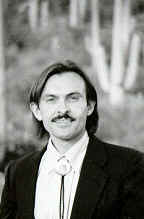Today we continued our indigenous approaches to hearing voices workshop. We began with a worker's question about how to approach the question of asking people about their voices. People in the room responded with descriptions of traumatic experiences with the mental health system when they acknowledged hearing voices. One person told the story of his 13 year old niece who told a school counselor that she was hearing voices and was immediately admitted to the psychiatric ward. It turned out that some mean girls had been teasing her at a school outing and she kept hearing in her mind the mean things that they had said. She knew that she was remembering what they had said and that they weren't there actually speaking to her but no one had taken the trouble to find out what she meant by hearing voices. Others talked about the scared look in counselors' and psychologists' eyes when the voices conversation occurred. A woman mentioned that when she was in the height of her voices and was hearing thousands of independent voices from every which direction (clouds, stars, mountains, even buses), so much so that she was mute, that it was only aboriginal people who noticed that she was going through an unusual experience and would sit with her and ask her to talk story with them. These were random aboriginal people in bus stations, train stations, cafes, and bars. Thus, the consensus was that one had to make people feel safe in order to talk about voices. People needed to feel that they weren't going to be carted away to the psychiatric hospital or involuntarily medicated. This led us to a discussion of how medication rarely took away the voices and that the side effects rarely made the effort worth the trouble. This was the consensus of all those present who had tried medication for suppressing voices. We talked about the idea that one could suppress voices and the consensus of everyone present was that this didn't work so well. The harder people tried to make the voice go away, the more powerful it became. A better strategy was to put the voice in context, to hear it in the context of all the other potential voices that could be heard, and cultivate other voices to counter the disturbing voices. Once one knew that it wasn't all powerful or even powerful at all, just annoying and bothersome, it was easier to ignore it and do something else.
After this discussion, we went forward with the talking circle. We encouraged people to speak to what they had gotten from the day before, to tell any dreams remembered, and to speak to what they wanted from the rest of the day. The common theme to reported dreams was selling and buying products that people needed -- furniture, computers, the Hamptons (an area at the Eastern end of Long Island in the United States), and more. A sub-theme was making sure there was no illicit contraband in the articles being bought and sold. People wanted to hear more about Native North American practices and communities. Another man wanted to know better strategies for closing down the work after it was completed.
At the conclusion of the break, I introduced a mind map exercise. In this exercise we list the prominent voices or thoughts we are hearing in our minds. I suggested imagining a board room table and putting each of those voices or thoughts around the table. The next step is to wonder who is verbalizing this voice or thought. Then we go after stories about the experiences that led to this character making the conclusions stated in the thought or voice. We gave everyone large pieces of paper to make these drawings. After people had worked for long enough, I asked for a volunteer to present his drawing. Quinn stepped forward and showed me his map. We started working on his voices. One said, "Why would you do this to me?" I asked Quinn who was the character who said this.
"Me at nine years old," he said.
"Tell me a story about how nine-year-old you came to think this way," I said. Quinn responded with a story of being bullied at school and at home and no one protecting him.
"That nine year old version of you feels hurt at not being protected and feels a sense of injustice about the whole mess, eh?" I asked.
"Exactly," he responded. We drew him as a nine-year old in cartoon stick figure form below the words, saying the words. We labeled it "nine year old Quinn". Then we found a voice that said, "I'm scared and afraid."
"Who's that?" I asked. "Who says that?"




